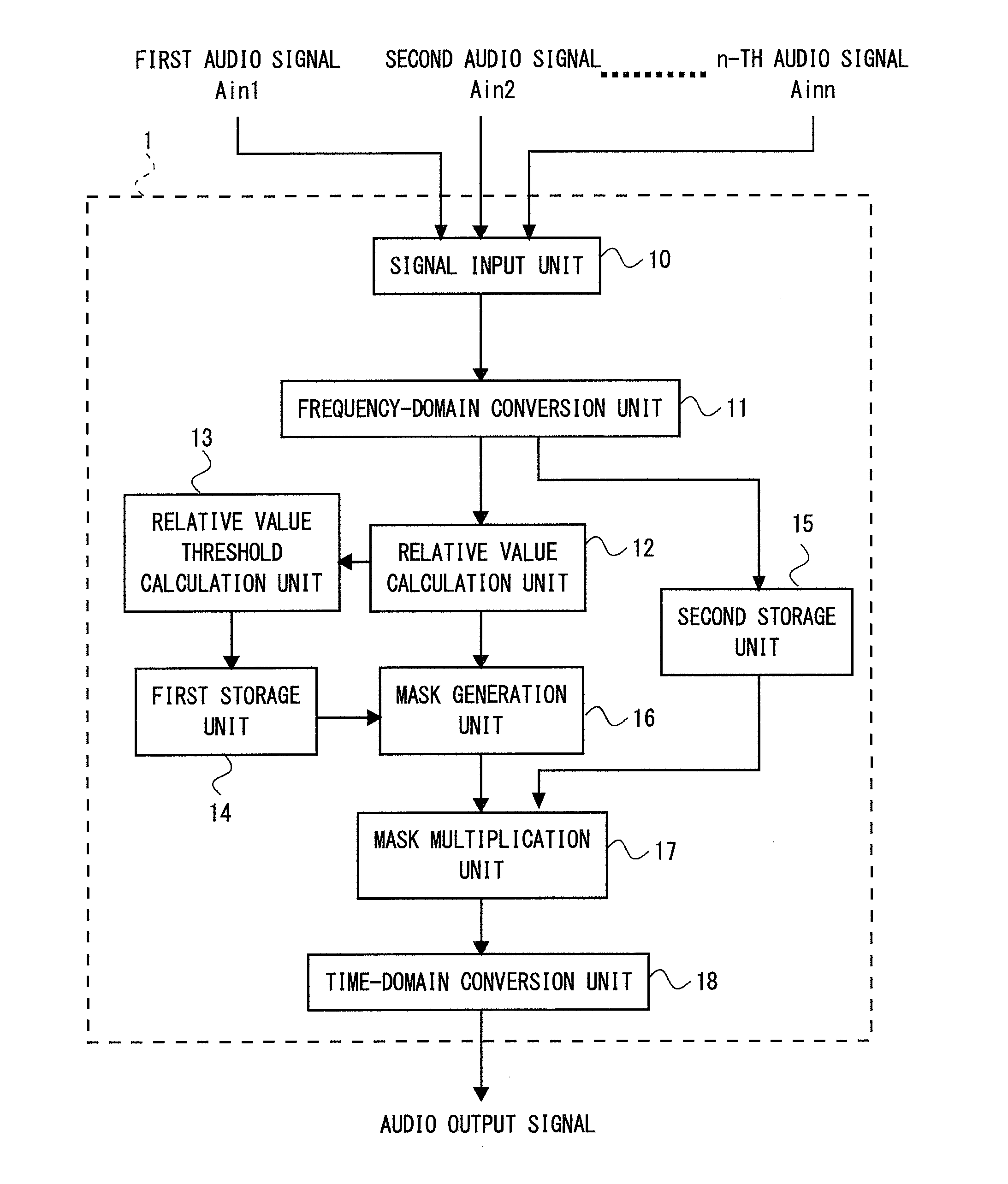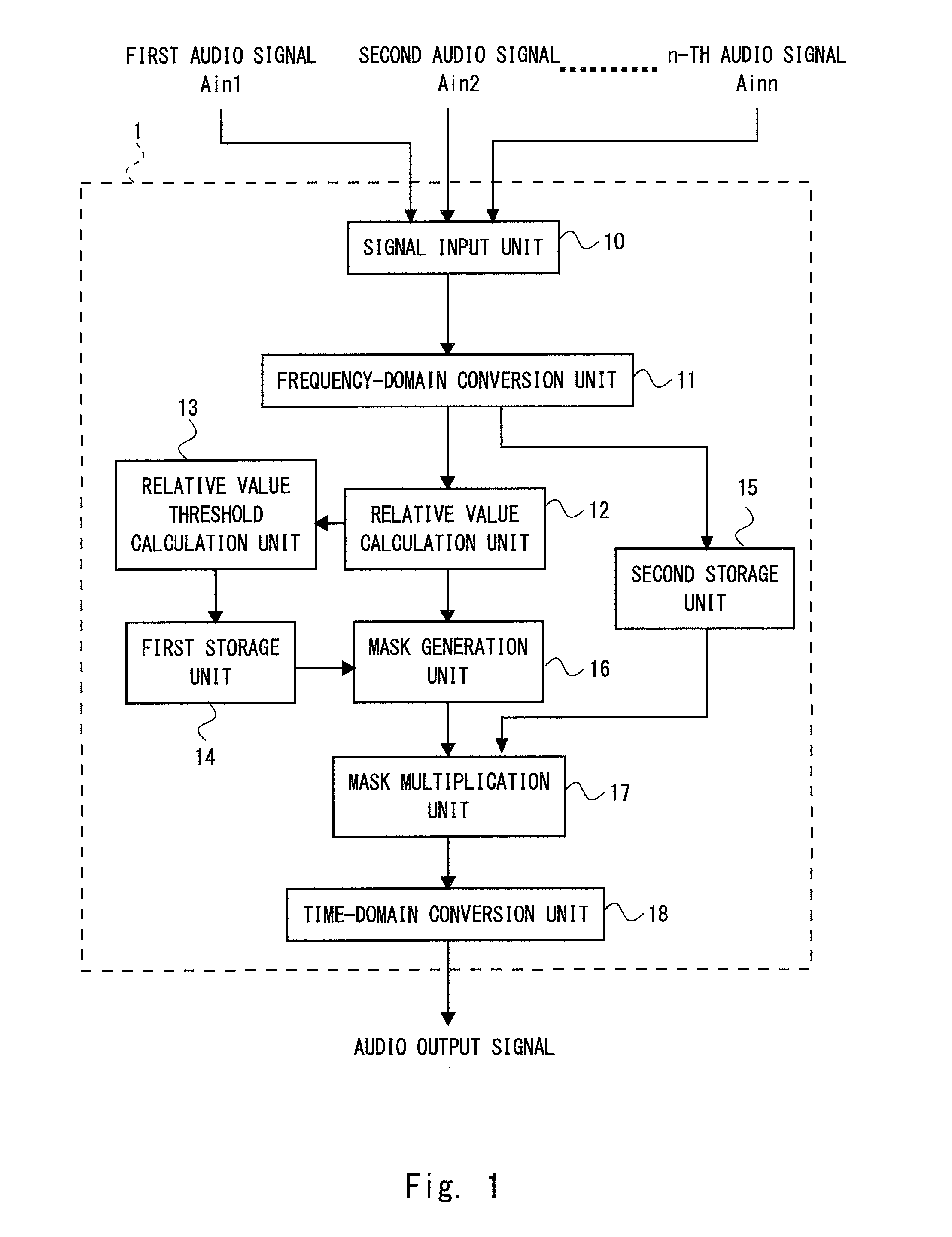Audio signal processing device
a signal processing and audio technology, applied in frequency response correction, electrical transducers, instruments, etc., can solve the problems of difficult to accurately calculate peak coordinates by clustering histograms, sound source separation effects by linear combination process in the system, and easy space reverberation, etc., to achieve the effect of higher accuracy
- Summary
- Abstract
- Description
- Claims
- Application Information
AI Technical Summary
Benefits of technology
Problems solved by technology
Method used
Image
Examples
first embodiment
[0027]Hereinafter, with reference to the drawings, embodiments of the present invention will be described. FIG. 1 shows a block diagram of an audio signal processing device 1 according to the first embodiment. The audio signal processing device 1 according to the first embodiment acquires a plurality of audio input signals (first audio input signal Ain1 to n-th audio input signal Ainn shown in FIG. 1) from a plurality of sound acquisition means (e.g., sensors such as microphones) installed at different positions. In the following description, an example of processing of two audio input signals will be described. The audio signal processing device 1 according to the first embodiment emphasizes a predetermined audio signal (hereinafter referred to as a desired audio signal) corresponding to a predetermined time-frequency component included in the audio input signals that are input. The desired audio signal satisfies a condition of a phase difference and an amplitude ratio in a predete...
second embodiment
[0065]In the audio signal processing device 1 according to the first embodiment, a so-called non-directional microphone having flat directional characteristics is preferably employed. There is a case, however, in which a microphone having predetermined directional characteristics or a low-cost microphone has to be employed in terms of the system configuration. When the microphone having directional characteristics is employed, a correct relative value may not be calculated in two microphones for signal components coming from a specific direction in terms of the structure. When the low-cost microphone is employed, a correct relative value may not be calculated as well since there may be individual differences in the hardware performance. In such a case, the distribution of the two-dimensional histogram of the phase difference and the amplitude ratio calculated from the plurality of microphones is more complicated than that when the non-directional microphone is used, and it is diffic...
PUM
 Login to View More
Login to View More Abstract
Description
Claims
Application Information
 Login to View More
Login to View More - R&D
- Intellectual Property
- Life Sciences
- Materials
- Tech Scout
- Unparalleled Data Quality
- Higher Quality Content
- 60% Fewer Hallucinations
Browse by: Latest US Patents, China's latest patents, Technical Efficacy Thesaurus, Application Domain, Technology Topic, Popular Technical Reports.
© 2025 PatSnap. All rights reserved.Legal|Privacy policy|Modern Slavery Act Transparency Statement|Sitemap|About US| Contact US: help@patsnap.com



